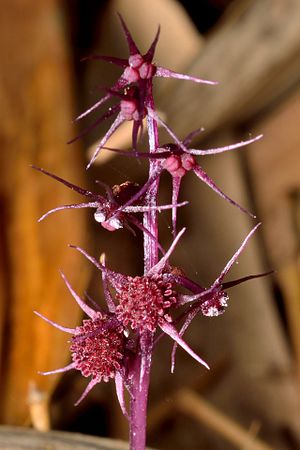Difference between revisions of "Triuridaceae"
Jump to navigation
Jump to search
m (1 revision: Angiosperm families - T) |
({{inedible family}}) |
||
| Line 8: | Line 8: | ||
}} | }} | ||
| − | + | {{inedible family}} | |
| − | |||
| − | |||
| − | |||
| − | |||
| − | |||
| − | |||
| − | |||
| − | |||
| − | |||
| − | |||
| − | |||
| − | |||
| − | |||
| − | |||
| − | |||
| − | |||
| − | |||
| − | |||
| − | |||
| − | |||
| − | |||
| − | |||
| − | |||
==References== | ==References== | ||
{{Reflist}} | {{Reflist}} | ||
| − | + | [[Category:Monocots]] | |
| − | |||
| − | |||
| − | |||
| − | |||
| − | |||
| − | |||
| − | |||
| − | |||
| − | |||
| − | |||
| − | |||
| − | [[Category: | ||
Latest revision as of 15:22, 2 November 2020
| Triuridaceae | |
|---|---|

| |
| Sciaphila secundiflora | |
| Scientific classification | |
| Kingdom: | Plantae |
| Clade: | Angiosperms |
| Clade: | Monocots |
| Order: | Pandanales |
| Family: | Triuridaceae Gardner[1] |
| Genera | |
|
See text | |
Triuridaceae is a family of plants with no known edible members.
References
- ↑ Angiosperm Phylogeny Group (2009). "An update of the Angiosperm Phylogeny Group classification for the orders and families of flowering plants: APG III" (PDF). Botanical Journal of the Linnean Society. 161 (2): 105–121. doi:10.1111/j.1095-8339.2009.00996.x. Retrieved 2013-07-06.